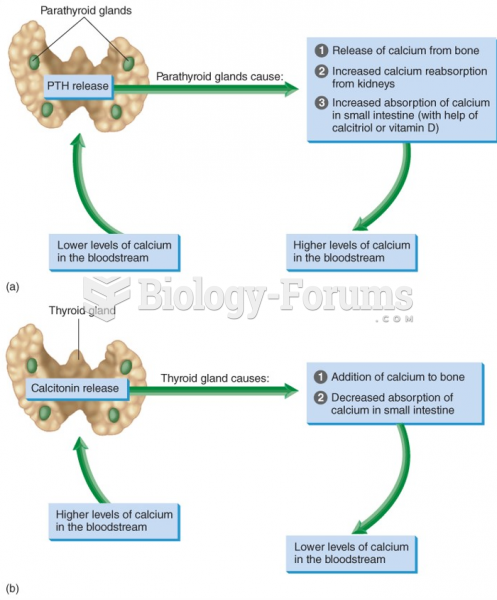Answer to Question 1
4
Rationale 1: Dark green, leafy vegetables are not the best of the sources of calcium listed.
Rationale 2: Calcium supplements and milk products are good choices, but the client must also have vitamin D.
Rationale 3: Potassium is not necessary with this illness.
Rationale 4: Calcium supplements and vitamin D are considered the most effective treatments for osteomalacia.
Global Rationale: Calcium supplements and vitamin D are considered the most effective treatments for osteomalacia. Dark green, leafy vegetables are not the best of the sources of calcium listed. Calcium supplements and milk products are good choices, but the client must also have vitamin D. Potassium is not necessary with this illness.
Answer to Question 2
1
Rationale 1: Febrile seizures typically cause tonic-clonic motor activity lasting for 12 minutes with rapid return of consciousness. These occur together with a rapid rise in body temperature, and usually occur only once during any given illness. Febrile seizures are most likely to occur within the 6-monthto5-year-old age group with the greatest risk around the second year of life.
Rationale 2: A generalized seizure is not localized to one area, but travels throughout the entire brain on both sides. The seizure is thought to originate bilaterally and symmetrically within the brain.
Rationale 3: Myoclonic seizures are characterized by large, jerking body movements. Major muscle groups contract quickly, and patients appear unsteady and clumsy. They might fall from a sitting position or drop whatever they are holding.
Rationale 4: With an atonic seizure, the client stumbles and falls for no apparent reason.
Global Rationale: Febrile seizures typically cause tonic-clonic motor activity lasting for 12 minutes with rapid return of consciousness. These occur together with a rapid rise in body temperature, and usually occur only once during any given illness. Febrile seizures are most likely to occur within the 6-monthto5-year-old age group. A generalized seizure is not localized to one area, but travels throughout the entire brain on both sides. The seizure is thought to originate bilaterally and symmetrically within the brain. Myoclonic seizures are characterized by large, jerking body movements. Major muscle groups contract quickly, and patients appear unsteady and clumsy. They might fall from a sitting position or drop whatever they are holding. With an atonic seizure, the client stumbles and falls for no apparent reason.







